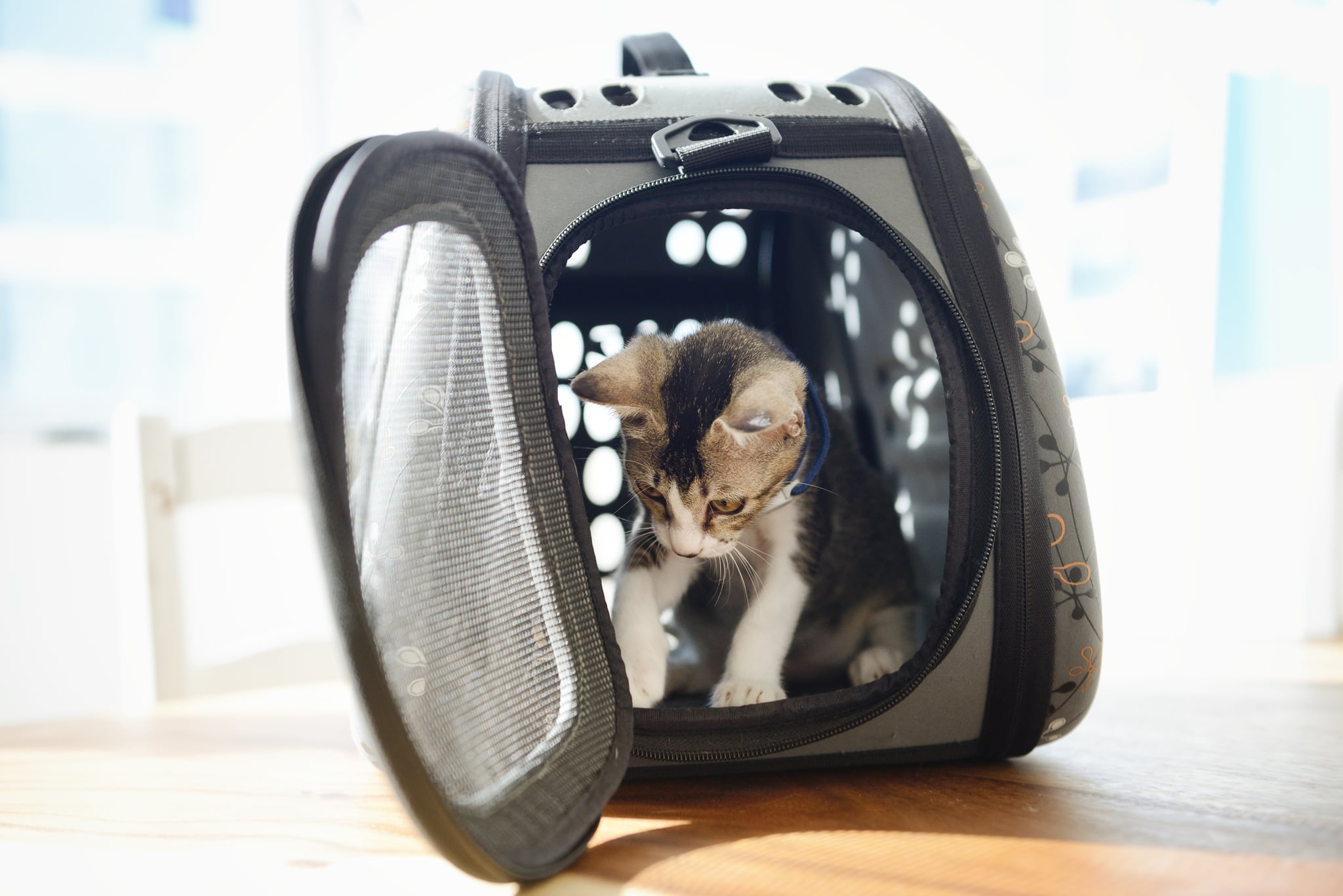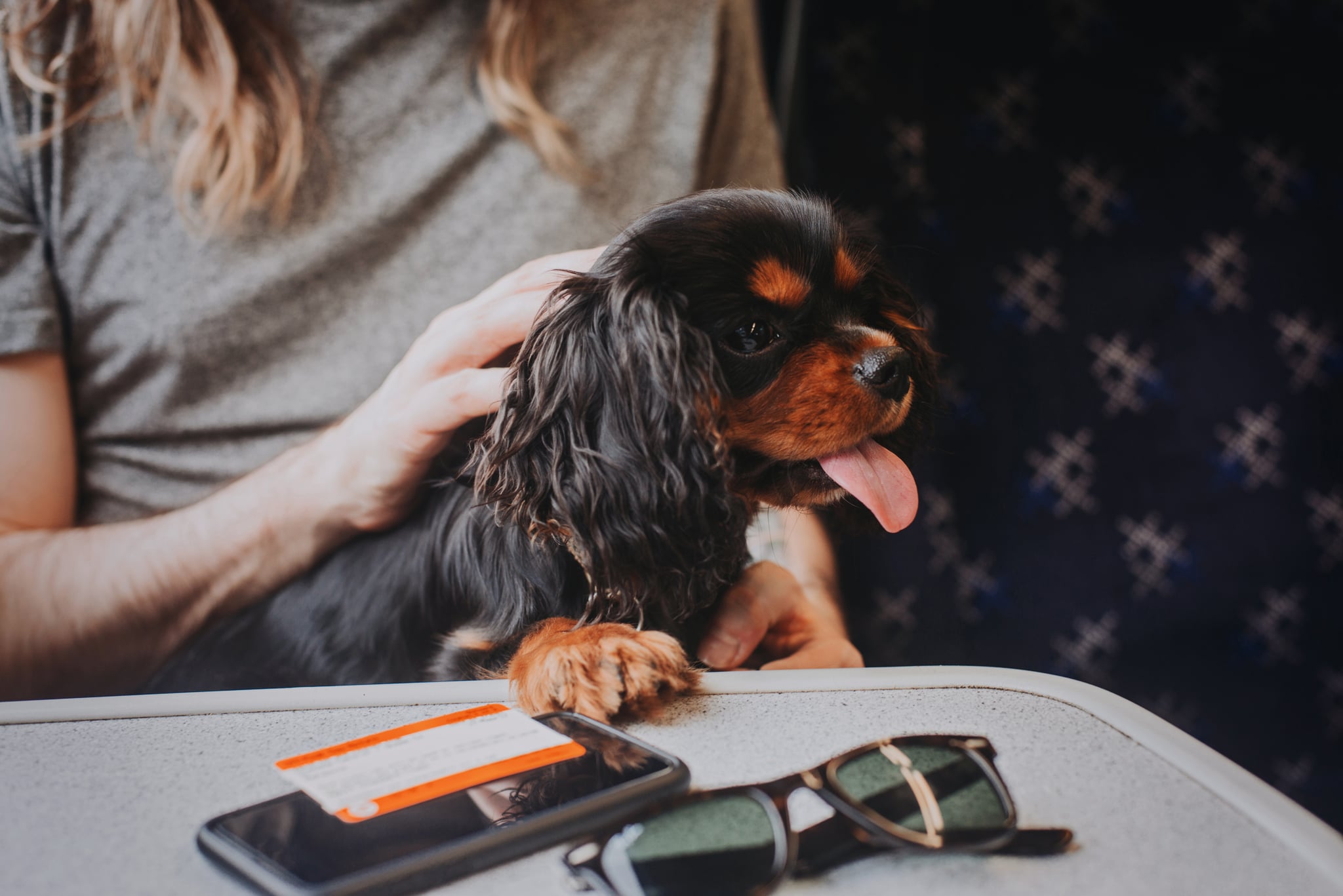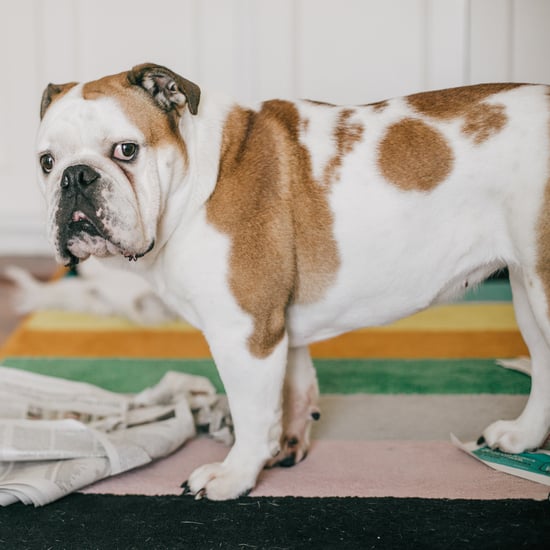How Do You Safely Travel With a Pet?
A Comprehensive Guide to Travelling With Your Pet in Almost Every Kind of Vehicle

Travelling with a pet is doable, but you do need to take some extra precautions to make sure they're comfortable and safe on your journey. If you're going on a trip or moving to a new part of the world, we bet you're psyched about it! Though if you're planning to bring your pet along, you might be nervous about how you're going to safely get your fur baby to your destination.
POPSUGAR spoke to Dr. David Gonsky, DVM, the founder and chief veterinarian of West Loop Veterinary Care in Chicago, about what you need to know before travelling with a pet. Here's the lowdown on pet travel, whether you're going by way of car, aeroplane, bus, or train.
How to Travel With a Pet in a Car
Going on a road trip with your dog or cat? While it might sound less complicated than travelling by plane, there are still some factors you need to consider. First, decide if you'll transport your pet in a crate or carrier. If so, you're going to want to spend some time getting your pet acclimated to it.
"You want to be sure your pet is accustomed to their carrier, crate, harness, or other restraint that you might use in the vehicle," Dr. Gonsky said. Here's how to do it: "Put their bedding and toys in the carrier so that it becomes a 'safe' space for them, or a piece of your own clothing that has your scent on it. As your pet explores the carrier, they will become more comfortable in it. If the carrier has an easily removable top, start with only having the bottom of the carrier out in an area the animal frequents."
"Let the animal get accustomed to going in and out of the crate before you close the door," he said. "The first few times you do close the door behind them, leave it closed for only for a very brief period. You can lengthen that period as the animal becomes more accustomed to being in the carrier. Over time, work up a level of comfort with the carrier so that they are able to stay in it for hours at a time without too much anxiety." Dr. Gonsky also explained that the carrier should be large enough to allow your pet to stand up, turn around, and comfortably lie back down.
How long should this whole process take? According to Dr. Gonsky, every pet is different, so it's preferable to do this as soon as you learn you'll be travelling. "It's best to have the carrier out as long as possible before the trip. Weeks, if possible. This gives the animal an opportunity to get accustomed to it."
Next up is to get your pet accustomed to the movement of your car. "You want to be certain that they don't suffer from motion sickness," said Dr. Gonsky. "Take them for short trips around the neighbourhood and slowly work up to longer time in the car."
Finally, be prepared to take some frequent breaks. "As to how long pets can be in a car, that really varies by pet. They should be allowed to keep their usual bathroom schedule, and like you, be allowed to stretch their legs and get some movement in," he said. This means that if you have a cat, you'll want to get them accustomed to wearing a harness before your trip so they can take a quick walk!

Image Source: Getty / Mark Liddell
How to Travel With a Pet in the Cargo Area of a Plane
Putting your pet in the cargo area of a plane might sound terrifying, but according to Dr. Gonsky, there usually aren't any problems. Be sure to check with your airline to determine what the rules are for bringing pets along. Sometimes, for example, pets aren't allowed to fly in the cargo area during months when the weather is too cold.
Before taking off, be sure to talk with your veterinarian about any specific health issues related to your cat or dog. And whether you're travelling with your pet in cargo or the cabin, go for a direct flight if at all possible. "Multiple planes increase the risk to your pet," Dr. Gonsky explained.
How to Travel With a Pet in the Cabin of a Plane
If you're lucky enough to be allowed to bring your pet into the cabin with you, a lot of the same information from the car travel section applies: get your pet used to a carrier and make sure they won't get motion sick. Look for a pet carrier that your fur baby will be comfortable in, and be sure to put their favourite blanket on the floor of the carrier for security and comfort.
"Each airline has its own regulations and fees for animals travelling both in the cabin and in cargo," Dr. Gonsky said. "It's important to be aware of all of the rules and regulations prior to booking any airline travel. Travel to other countries may have additional requirements beyond what is required for airline travel by pets within the United States."
How to Travel With a Pet on a Bus/Train
Finally, travelling on a bus or train with your pet may be a good option if you're not sure how your pet will take to air travel and your trip is too long to make by car. Amtrak, for example, allows pets up to 20 pounds to be carried on in a pet carrier and placed under your seat. Unfortunately, larger dogs probably won't be allowed on your local bus or train — for your big fur babies, car or cargo travel might be the most realistic option.
Tips From a Vet Before You Go
Dr. Gonsky had a few other tips and tricks to share to help keep your pets happy and healthy during travel. First and foremost, check in with your vet before you go. "Remember that not all animals are able to travel," he said. "Some, due to health or extreme anxiety, should stay at home. Your veterinarian can help you determine if travel is appropriate for your pet."
Before embarking, you might have a few errands to run to get your pet ready to go. "Make certain that they have up-to-date collar tags with their name, your address, and phone number. Pets should also have a microchip and the registration on file with the microchip company should have your correct contact information. This is one of the most effective ways to make sure your pet is reunited with you should it become lost," Dr. Gonsky said.
It might seem like a lot of work to get your pet ready for a safe and happy trip, but your furry friend will thank you for having all your dogs (er, ducks) in a row before take off. Bon voyage!








